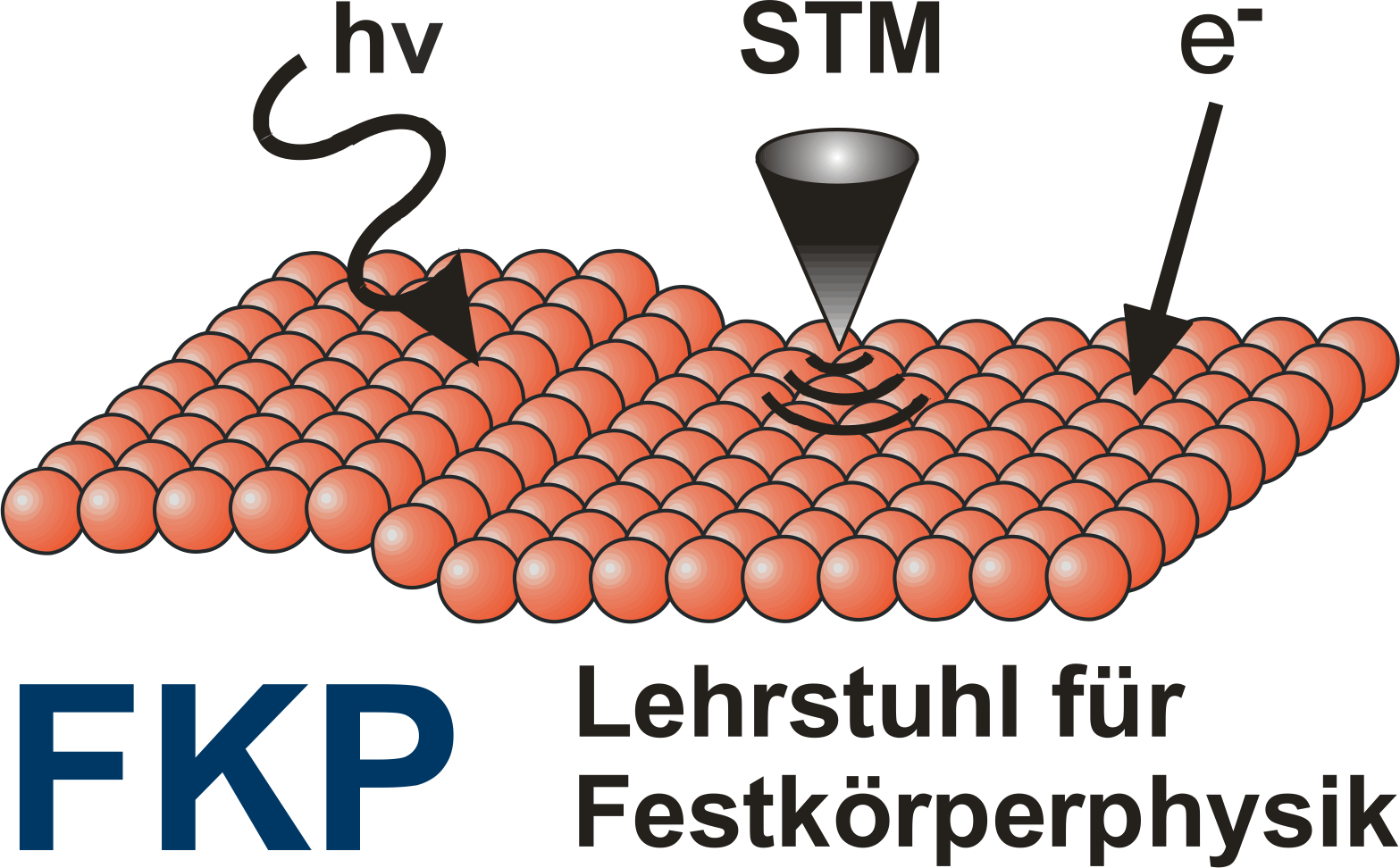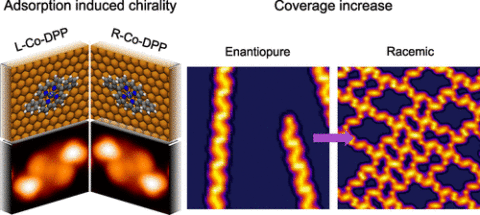Coverage induced switching of chirality in surface self-assemblies of prochiral molecules
When molecules adsorb on surfaces many interesting phenomena arise. One is the occurrence of chirality (handedness) from molecules that a achiral in the gas phase. These so called “prochiral” molecule can adsorb in two mirror symmetric ways on a surface and become chiral, since the two configurations cannot be superimposed by translation or rotation. By suitable molecule-molecule interaction they may form supramolecular self-assemblies. These self-assemblies can then be either enantiopure (e.g. only containing the left- or right-handed molecule) or racemic, i.e. containing a mixture of both molecular configurations.
In our paper that appeared in the ACS Journal of Physical Chemistry C we investigated the behaviour of a particular, metallated porpyhrin molecule on the copper (111) surface. We found that upon increasing the molecular coverage on the surface a transition from enantiopure chain-like self-assemblies towards racemic networks occurred. We could show that this is due to subtle details of the molecule-molecule interaction and potentially to the fact that the molecules may switch their chirality when adsorbed on the surface.
Feifei Xiang and M. Alexander Schneider, Coverage-Induced Chiral Transition of Co(II)-5,15-Diphenylporphyrin Self-Assemblies on Cu(111), J. Phys. Chem. C (2022), 126, 15, 6745–6752

